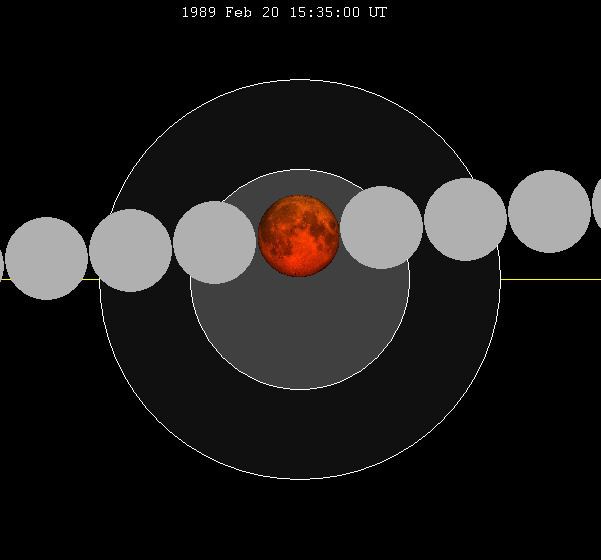 | ||
A total lunar eclipse took place on February 20, 1989, the first of two total lunar eclipses in 1989.
Contents
Visibility
It was completely visible from Australia and most of Asia. It was visible setting in eastern Africa and Europe. In the Philippines, the lunar eclipse was very visible throughout the country since the modern lunar eclipse happened on July 26, 1953.
It was also preceded by the twin total lunar eclipses on April 24, 1986 and October 17, 1986. The next one happened on February 9, 1990.
Tritos series
The tritos series repeats 31 days short of 11 years at alternating nodes. Sequential events have incremental Saros cycle indices.
This series produces 20 total eclipses between April 24, 1967 and August 1, 2167, only being partial on November 19, 2021.
Saros series (18 years 11 days)
Lunar saros series 123, repeating every 18 years and 11 days, has 25 total lunar eclipses. The first total lunar eclipse of this series was on July 16, 1628, and last will be on April 4, 2061. The two longest occurrence of this series were on September 20, 1736 and October 1, 1754 when totality lasted 106 minutes.
It last occurred on February 10, 1971 and will next occur on March 3, 2007.
Metonic cycle (19 years)
This is the third of five Metonic lunar eclipses.
The Metonic cycle repeats nearly exactly every 19 years and represents a Saros cycle plus one lunar year. Because it occurs on the same calendar date, the earth's shadow will in nearly the same location relative to the background stars.
